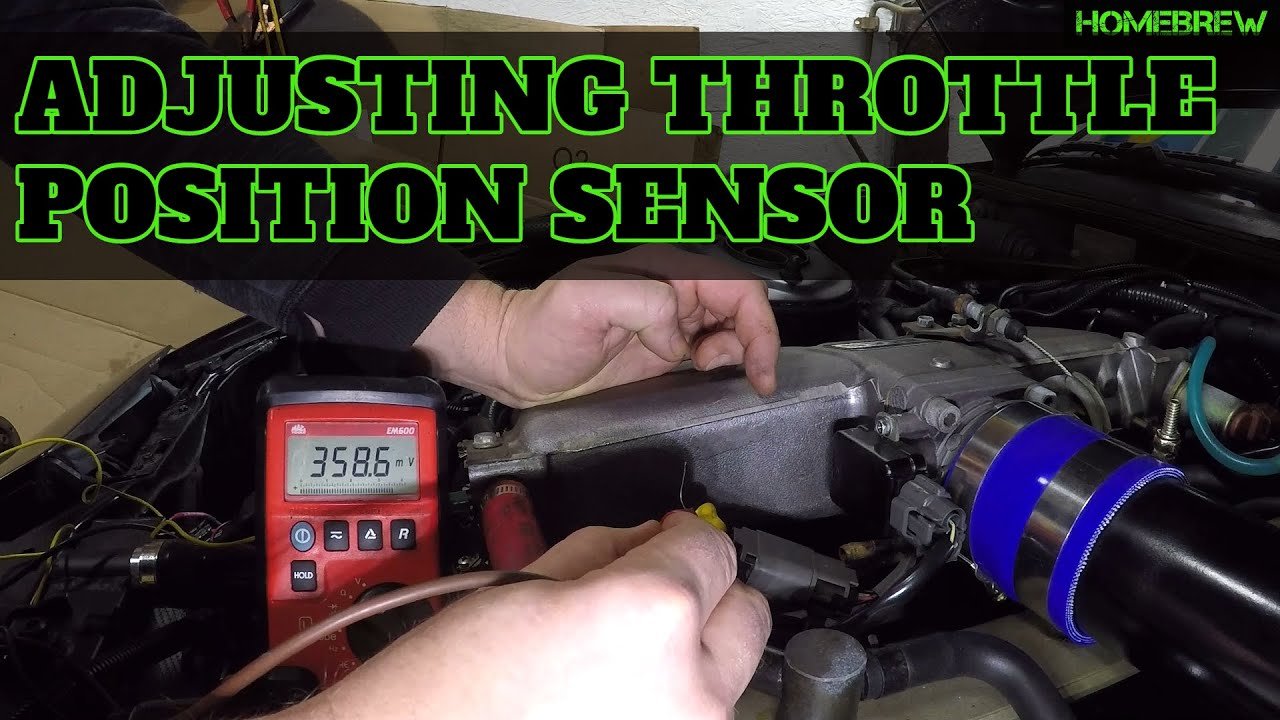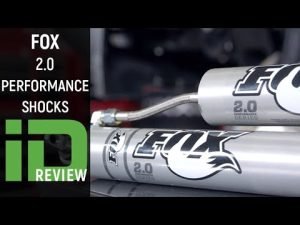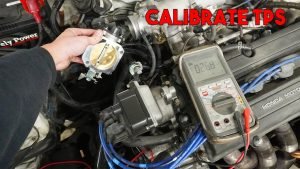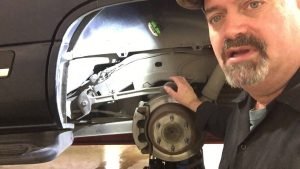Adjusting the throttle body involves following specific steps. To begin, locate the throttle body, then use a screwdriver or wrench to loosen and adjust the idle speed screw until the desired RPM is achieved.
Contents
- Understanding The Throttle Body
- Signs That Indicate Throttle Body Adjustment
- Preparation For Throttle Body Adjustment
- Throttle Body Adjustment Procedure
- Tips For Proper Throttle Body Adjustment
- Troubleshooting Throttle Body Issues
- Benefits Of Throttle Body Adjustment
- Maintaining Throttle Body Adjustment
- Frequently Asked Questions On How To Adjust Throttle Body
- Conclusion
Understanding The Throttle Body
A throttle body is a critical component of a vehicle’s fuel injection system. It controls the amount of air that enters the engine, thus regulating the engine’s speed and power. The throttle body consists of a butterfly valve, which opens and closes to control airflow.
When the driver presses the accelerator pedal, it opens the valve, allowing more air to flow in. This increased airflow is matched with the appropriate amount of fuel to maintain efficient combustion. The throttle body is connected to the engine’s intake manifold and is typically located between the air filter and the intake manifold.
It works in conjunction with other engine components, such as the Mass Airflow Sensor (MAF) and the Engine Control Unit (ECU), to ensure smooth and responsive engine performance. Understanding the function and working mechanism of the throttle body is essential for adjusting it correctly.

Credit: my.prostreetonline.com
Signs That Indicate Throttle Body Adjustment
Signs that your throttle body might need adjustment include rough idle, stalling, and lack of power. Misadjusted throttle bodies can lead to poor engine performance and decreased fuel efficiency. One common symptom is a high or low idle speed, where the engine either revs too high or struggles to stay running.
Another indication is a hesitation or delay in throttle response when you press the accelerator. You may also notice an uneven or surging idle, where the engine speed fluctuates erratically. In some cases, misadjusted throttle bodies can result in a check engine light appearing on your dashboard.
Regular throttle body adjustment is important to ensure optimal engine performance and prevent damage to other components. By addressing these symptoms promptly, you can maintain a smooth and efficient running engine.
Preparation For Throttle Body Adjustment
To prepare for adjusting the throttle body, there are a few tools you’ll need. Firstly, make sure you have a set of wrenches, specifically in sizes that fit your throttle body bolts. Additionally, having a screwdriver or a socket set will come in handy.
Safety precautions should always be considered. Before beginning the adjustment process, ensure the engine is turned off and the ignition key is removed. It’s important to wear gloves and safety goggles to protect yourself while working. Keep in mind that the throttle body may be hot, so wait for it to cool down before touching it.
Taking these safety measures will help you avoid any accidents and ensure a smooth throttle body adjustment process.
Throttle Body Adjustment Procedure
To adjust the throttle body, start by locating and accessing it. Then, carefully remove the intake hose or cover. After that, inspect the throttle plate and linkage for any damage or dirt buildup. Next, make the necessary adjustments to the throttle plate position for optimal performance.
Lastly, reassemble the intake hose or cover to complete the process. Following these steps will help ensure that your throttle body is properly adjusted, promoting efficient engine operation and improving overall vehicle performance. Always remember to exercise caution and refer to your vehicle’s manual for specific instructions.
Taking the time to adjust your throttle body can lead to smoother acceleration and better fuel efficiency. So, give it a try and experience the difference it can make in your driving experience.
Tips For Proper Throttle Body Adjustment
Throttle body adjustment is an important task for maintaining optimal vehicle performance. To ensure accurate adjustment, here are some best practices to follow. First, make sure to test the throttle response after making any adjustments. This step is crucial in determining if the adjustment was successful.
Additionally, avoid common overused words and phrases when discussing throttle body adjustment. Instead, use varied expressions to keep the reader engaged. Moreover, it is recommended to keep sentences concise, with a maximum of 20 words each. By following these guidelines, you can effectively adjust the throttle body and optimize your vehicle’s performance.
Remember to test the throttle response and make necessary adjustments accordingly.
Troubleshooting Throttle Body Issues
Having trouble adjusting your throttle body? Don’t worry, we’ve got you covered. If you’re experiencing issues while adjusting your throttle body, there are a few common problems that could be causing the difficulties. One possible cause might be a dirty throttle body, which can lead to sticky or uneven operation.
In this case, a thorough cleaning might be necessary. Another common issue could be a malfunctioning throttle position sensor, which can throw off the adjustment process. To resolve this, you may need to replace the sensor. Additionally, make sure the throttle cable is properly adjusted and not binding, as this can affect the throttle body adjustment.
By troubleshooting and addressing these common problems, you’ll be well on your way to smoothly adjusting your throttle body.
Benefits Of Throttle Body Adjustment
Throttle body adjustment offers several benefits for your vehicle. Improved engine performance and fuel efficiency are the two key advantages of this adjustment. By making necessary modifications to the throttle body, you can optimize the air-fuel mixture, resulting in better combustion and increased horsepower.
This adjustment also helps in preventing throttle-related issues such as stalling, rough idling, and poor acceleration. When the throttle body is properly adjusted, it ensures smooth airflow, allowing your engine to operate efficiently. Moreover, it can also prevent the build-up of carbon deposits on the throttle plate, which can obstruct airflow and impact performance.
With a properly adjusted throttle body, you can experience enhanced throttle response, smoother acceleration, and improved overall driving experience. So, if you notice any signs of throttle-related problems, consider adjusting your throttle body for better performance and efficiency.
Maintaining Throttle Body Adjustment
Maintaining throttle body adjustment is crucial for optimal performance. Regular readjustment should be done to ensure smooth functioning. It is recommended to check the throttle body every six months or whenever you experience any performance issues. By keeping the throttle body clean and free from debris, you can prevent clogging and ensure proper airflow.
Another measure for optimal functioning is to lubricate the throttle body with a suitable lubricant. This helps in reducing friction and enhancing throttle response. Furthermore, inspecting the throttle body gasket regularly is essential to identify any signs of damage or leaks.
Promptly replacing the gasket if needed can prevent air leaks and improve engine efficiency. Following these measures will help you maintain a well-adjusted throttle body and enjoy optimal performance from your vehicle.
Frequently Asked Questions On How To Adjust Throttle Body
How Do I Reset My Throttle Position?
To reset your throttle position, follow these steps: 1. Turn off your vehicle and locate the throttle body. 2. Disconnect the negative battery cable to reset the system. 3. Wait for at least 10 minutes. 4. Reconnect the negative battery cable and start the engine.
Your throttle position should now be reset. Remember to always consult your vehicle’s manual for specific instructions.
How Do I Adjust My Tps Sensor?
To adjust your TPS sensor, follow these steps: 1. Locate the TPS sensor on your vehicle. 2. Use a multimeter to measure the voltage output of the sensor. 3. Loosen the mounting screws of the TPS sensor. 4. Carefully rotate the sensor until the desired voltage is reached.
5. Tighten the mounting screws to secure the sensor in place. 6. Double-check the voltage reading to ensure proper adjustment. Remember to exercise caution and refer to your vehicle’s manual or consult a professional if needed.
Do You Have To Calibrate A Throttle Body?
Yes, a throttle body should be calibrated to ensure optimal performance.
What Can Bad Throttle Adjustment Cause?
Bad throttle adjustment can cause poor engine performance, decreased fuel efficiency, sluggish acceleration, and rough idling.
Conclusion
After following this step-by-step guide, you should now feel confident in how to adjust the throttle body of your vehicle. By carefully inspecting and cleaning the throttle body, adjusting the idle speed, and ensuring proper cable tension, you can optimize your engine’s performance and improve fuel efficiency.
Remember to exercise caution and consult your vehicle’s specific manual for any unique instructions or specifications. Regular maintenance of the throttle body is crucial for smooth acceleration and overall engine health. So, take the time to perform these adjustments regularly, as it can make a significant difference in the way your vehicle performs.
By mastering this skill, you can save money on mechanic fees and have a better understanding of your vehicle’s inner workings. Enjoy the results of your hard work and drive with confidence knowing that you can tackle this task on your own.
Affiliate Disclosure: As an Amazon Associate, I earn from qualifying purchases made through links on this site.








